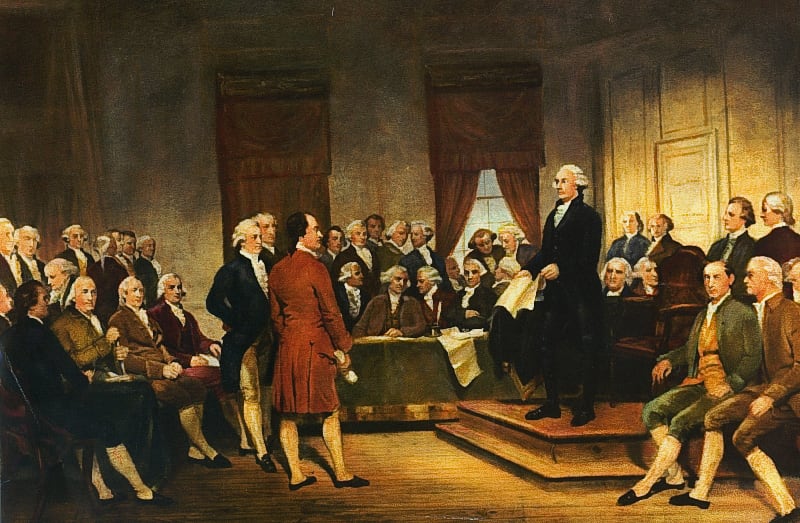Last week, I wrote about how the progressive movement represents a fundamental challenge to our Madisonian system of checks and balances. Progressives believe that constitutional limits on the federal government may have been appropriate in the horse-and-buggy era, but not anymore. In their view, limits on government now represent an obstacle to progress. As they see it, we need a more powerful government to lead the nation in the modern era.
Because progressives have complained about these limits on government for so long, many Americans now believe that the Constitution was designed specifically to place limits on government. Nothing could be further from the truth. In fact, those who drafted and supported the Constitution — including the writers of the Federalist Papers — were on the “big government” side of the 18th century debate.
That assertion will certainly be shocking to many. But it’s an essential point for those seeking to learn the lessons of our history. The better we understand the world view of our founders, the more we can learn from their wisdom.
In 1787, the young United States was governed by the Articles of Confederation. While those articles created a nominal national government, the arrangement might be better described as a semiformal alliance (somewhat like the United Nations today). The government could not raise taxes or enforce its own laws but had to rely upon support from the individual states.
At the time, the country was experiencing economic difficulties and faced serious national security concerns. Many feared the U.S. would break up into 13 separate nations quarreling as vehemently as the European nations did.
In that environment, the Constitutional Convention was called to create a true national government. Those who attended had a range of perspectives of just how powerful this new government should be. But the objective demanded something significantly more powerful than the Articles of Confederation.
For those today who remain skeptical about the founders being big government advocates, consider the plan proposed by Alexander Hamilton. During a lengthy floor speech, he expressed the view that senators and the president should serve for life. The New Yorker also suggested that state governors should be appointed by the federal government.
Later, in the Federalist Papers, Hamilton called for a government “at least equally energetic with the one proposed.” When it came to national security issues, Hamilton said that the government’s powers “ought to exist without limitation.” As if that wasn’t enough, he added that “the same must be the case in respect to commerce.”

So much for the idea that the Constitution was designed to create a limited government.
In fairness, it must be noted that Hamilton’s views were extreme even among those who wanted a powerful central government. And, his over-the-top proposals were never seriously considered at the convention. More cautious delegates, like James Madison, better understood the moment and carried the day. While Madison wanted a true national government, he also recognized the need for vigorous checks and balances.
It’s also important to note that those attending the Constitutional Convention were not engaged in a theoretical debate about the size of government. Their goal was to create a society that worked, not to divine a utopian scheme of government. The driving question in the minds of many was whether the United States would continue as a single nation or become separate groups of nations.
As they considered that question, the founders ended up wrestling with the unavoidable tension between individual freedom and government power. As John Jay put it in “Federalist No. 2,” “Nothing is more certain than the indispensable necessity of government.” It was, however, “equally undeniable” that granting power to government means “people must cede to it some of their natural rights.”
In other words, the founders were searching to find the right balance. To some, a more powerful national government was the only way to hold the nation together. For others, the plan sounded like a monarchy and was too high a price to pay for unity.
When all was said and done, those who drafted the Constitution didn’t get the balance quite right. The government they proposed was more powerful than the nation was willing to support. Specifically, many opponents were concerned that the document did not include a Bill of Rights. Without the promise to add such protections, the Constitution would never have been ratified.
Ultimately, of course, those who wanted a more powerful central government got their wish when the Constitution went into effect. But that power was balanced by the Bill of Rights, and the ongoing zeal of individual Americans to guard their freedom.
It was that balance that enabled our nation to grow and prosper under the Constitution.
Scott Rasmussen is an American political analyst and digital media entrepreneur. He is the author of “The Sun is Still Rising: Politics Has Failed But America Will Not.”


